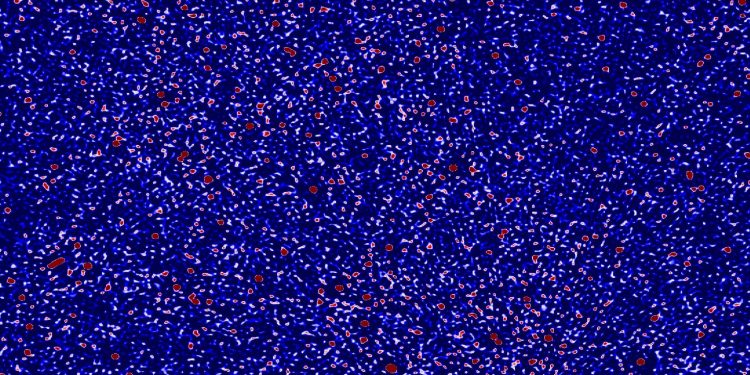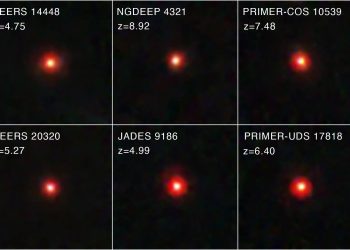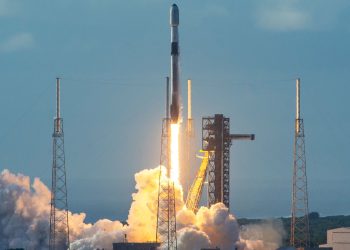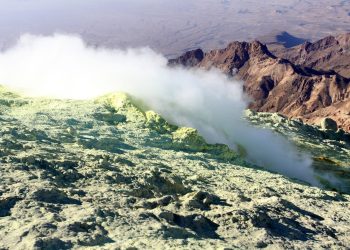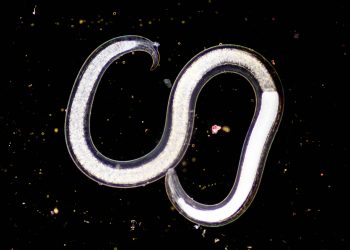Long before starlight first filled the cosmos, the young universe may have been simmering, a new study suggests.
The results suggest that about 800 million years after the Big Bang, energy from new black holes and the discolored embers of the first stars was already warming vast clouds of intergalactic hydrogen, providing a rare glimpse into a largely unexplored chapter in the early life of the universe.
Astronomers know that the universe began in an extremely hot and dense state, the Big Bangabout 13.8 billion years ago, then cooled rapidly as it expanded. About 400,000 years later, temperatures dropped enough for protons and electrons to fuse into neutral hydrogen atoms, and the cosmos slipped into space. “Cosmic Dark Ages” – a long, lightless expanse where space was veiled by a thick fog of hydrogen gas.
Echoes of the universe
Because direct observation of the universe’s first stars is not possible—they were too faint, too short-lived, and far too distant for even the most powerful telescopes to detect them—astronomers are instead looking for the subtle fingerprints these stars left in the hydrogen gas around them.
In the new study, Nunhokee and his team analyzed nearly a decade of data from the Murchison Widefield Array, a powerful radio telescope in the remote Western Australian desert, to search for a faint radio “whisper” from this ancient hydrogen.
The signal appears when a hydrogen atom’s single proton and electron flip their spins relative to each other – a tiny change that changes the atom’s energy and causes it to emit or absorb a photon at a specific wavelength. Astronomers look for the faint radio echo of this transition, which appears at a wavelength of 21 centimeters – or, for our instruments, a frequency of about 1.42 gigahertz. Because the strength of the signal is affected by the temperature and environment of the surrounding hydrogen gas, it acts as a cosmic thermometer, revealing how the first stars and black holes began to influence the early universe.
However, detecting this ancient signal is extremely difficult. It’s buried beneath much more intense layers of radio noise coming from the Milky Way, other nearby galaxies, Earth’s atmosphere, and even the telescope itself. To find out, the team developed a new statistical filtering technique to remove these foreground signals and isolate the most likely emission of hydrogen gas from around 800 million years after the Big Bang.
This new approach produced the clearest radio map ever made of the early universe and set the strictest limits yet on the strength of the 21-centimeter signal, the team noted in the study.
Despite focusing on what Nunhokee described as “kind of a cold period where we only have a few sources” and using “the best data we have,” the team found no evidence of this telltale signal. “Because it’s very weak, it’s very hard,” she said.
After cleaning the data, the researchers did not see the distinctive signature that would indicate a “cold start” of reionization. This feature would have been visible in their data if the universe, around 800 million years after the Big Bang, had remained icy until the first stars lit up. The result therefore suggests that the universe was hotter than expected, according to the study.
“As the universe evolves, the gas between galaxies expands and cools, so we expect it to be very, very cold,” said the study’s lead author. Cathryn Trottprofessor at the Curtin Institute of Radio Astronomy, said in a statement. “Our measurements show that it is at least heated to some extent. Not much, but it tells us that very cold reionization is ruled out – that’s really interesting.”
Cosmological models indicate that X-rays from early black holes and the remnants of massive stars are likely responsible for warming intergalactic gas long before visible starlight filled the cosmos, Nunhokee said.
The team’s new data cleaning technique also lays the crucial foundation for the upcoming Square Kilometer Array (SKA). Scientists say this next-generation radio telescope, currently under construction in Australia and South Africa, will have the sensitivity to directly detect the elusive 21-centimeter signal.
“We know what we’re looking for,” Nunhokee said. “We just need a few hours of data (from SKA) that will allow us to reach the levels we want.”


